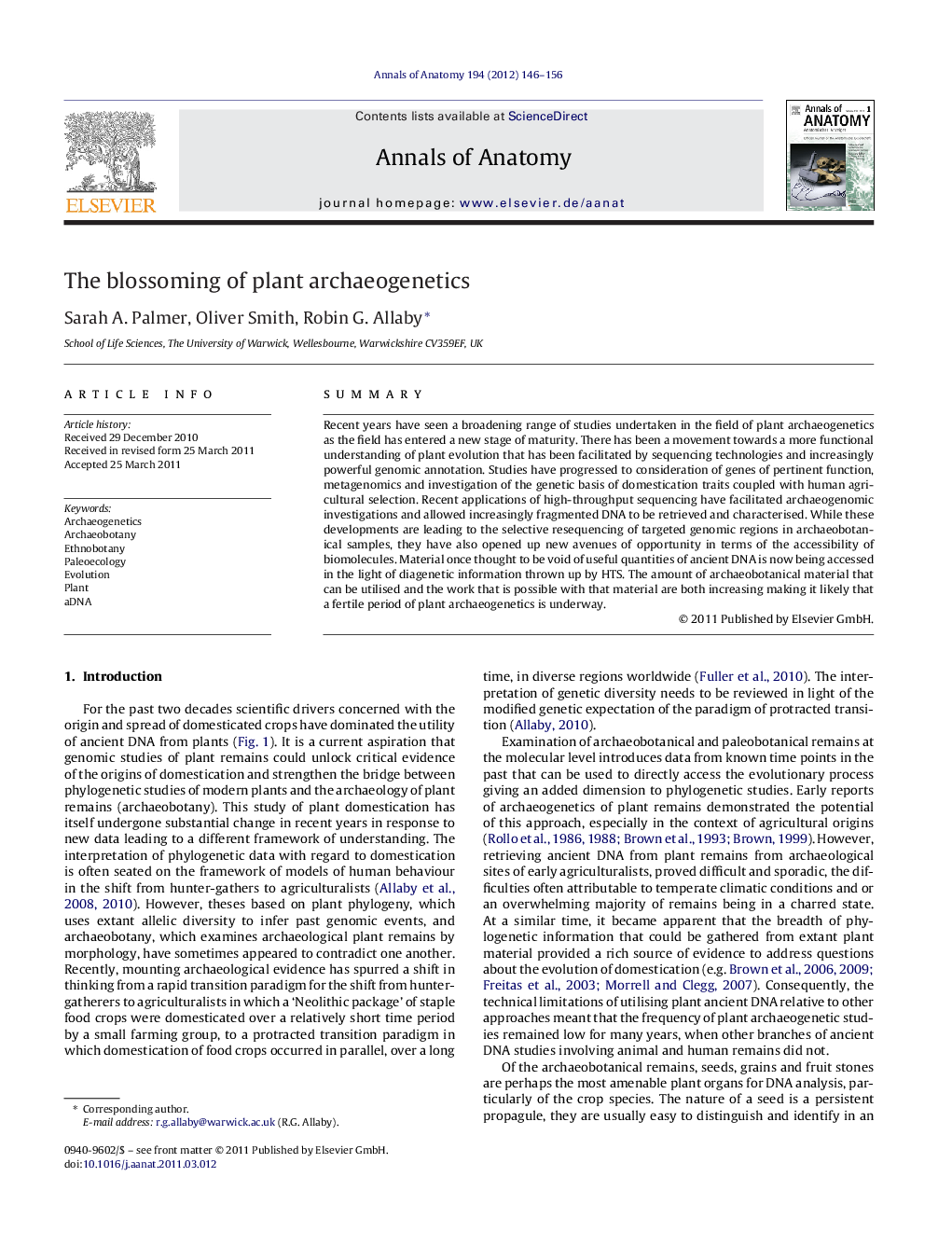| Article ID | Journal | Published Year | Pages | File Type |
|---|---|---|---|---|
| 8461905 | Annals of Anatomy - Anatomischer Anzeiger | 2012 | 11 Pages |
Abstract
Recent years have seen a broadening range of studies undertaken in the field of plant archaeogenetics as the field has entered a new stage of maturity. There has been a movement towards a more functional understanding of plant evolution that has been facilitated by sequencing technologies and increasingly powerful genomic annotation. Studies have progressed to consideration of genes of pertinent function, metagenomics and investigation of the genetic basis of domestication traits coupled with human agricultural selection. Recent applications of high-throughput sequencing have facilitated archaeogenomic investigations and allowed increasingly fragmented DNA to be retrieved and characterised. While these developments are leading to the selective resequencing of targeted genomic regions in archaeobotanical samples, they have also opened up new avenues of opportunity in terms of the accessibility of biomolecules. Material once thought to be void of useful quantities of ancient DNA is now being accessed in the light of diagenetic information thrown up by HTS. The amount of archaeobotanical material that can be utilised and the work that is possible with that material are both increasing making it likely that a fertile period of plant archaeogenetics is underway.
Related Topics
Life Sciences
Biochemistry, Genetics and Molecular Biology
Cell Biology
Authors
Sarah A. Palmer, Oliver Smith, Robin G. Allaby,
